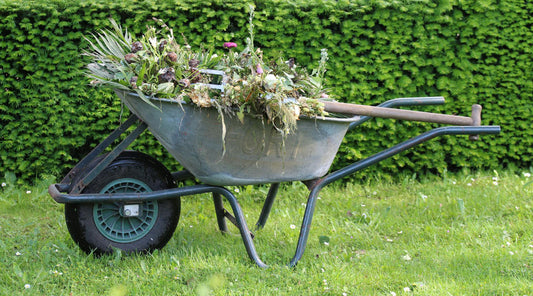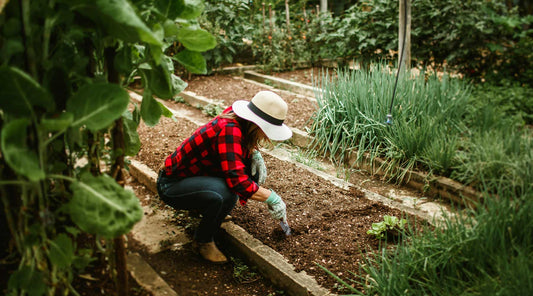Spring in the garden is a magical time—the fresh green shoots, the scent of blooming flowers, and the excitement of another growing season. But with all that beauty comes an inevitable challenge: pests. Every gardener, whether a first-timer or a seasoned pro, has felt the frustration of watching their precious plants get munched on by unwanted visitors. Over the years, I’ve learned that fighting pests doesn’t have to mean reaching for harsh chemicals. Instead, nature provides plenty of solutions to keep our gardens thriving without harming the environment—or the beneficial creatures we actually want around.
1. Companion Planting: Nature’s Built-In Pest Repellent

I’ll never forget the year my daughter helped me plant marigolds around our tomato patch. “Why are we planting flowers in the vegetable garden, Dad?” she asked. That season, she learned one of my favorite organic tricks—companion planting. Certain plants naturally deter pests, and when planted strategically, they create a built-in defense system.
- Basil & Tomatoes: Not only does basil improve the flavor of tomatoes, but it also repels aphids and hornworms.
- Marigolds & Vegetables: These cheerful flowers keep nematodes and aphids at bay.
- Nasturtiums & Cucumbers: Nasturtiums act as a sacrificial plant, drawing aphids away from your veggies.
- Garlic & Roses: A classic duo! Garlic helps deter Japanese beetles and aphids from your roses.
Companion planting is an easy and effective way to reduce pest problems while keeping your garden diverse and beautiful. Plus, it’s a fun way to mix flowers and vegetables in the same space.
2. Homemade Sprays: Safe and Effective DIY Solutions
I used to think that if I didn’t use store-bought pesticides, I had to just accept a certain amount of pest damage. Not true! Homemade sprays are simple, inexpensive, and surprisingly effective. Here are some of my go-to recipes:
- Garlic & Chili Spray: Blend a few cloves of garlic, a teaspoon of chili powder, and a squirt of dish soap in a quart of water. Let it sit overnight, strain, and spray on affected plants. Works wonders on aphids and caterpillars!
- Neem Oil Solution: Mix a teaspoon of neem oil with water and a bit of dish soap. This natural oil disrupts pests’ life cycles and is great for fungal issues too.
- Soapy Water Spray: The simplest solution—just a teaspoon of mild dish soap in a quart of water. It suffocates soft-bodied insects like aphids.
The best part? These sprays are safe for kids, pets, and beneficial insects when used correctly. Just be sure to apply in the early morning or late evening to avoid harming pollinators.
3. Beneficial Insects: Nature’s Pest Patrol

One spring, my son and I released a container of ladybugs into the garden at dusk. He watched in amazement as they climbed up the stems, ready to go to work on our aphid problem. Beneficial insects are a gardener’s secret weapon.
- Ladybugs: Natural predators of aphids, mealybugs, and spider mites.
- Lacewings: Their larvae devour soft-bodied pests.
- Praying Mantises: These fascinating hunters take care of everything from caterpillars to beetles.
- Bees & Butterflies: While they aren’t pest fighters, they pollinate our crops and keep our gardens productive.
To attract these helpful critters, plant a variety of native flowers, avoid chemical pesticides, and provide small water sources. It’s rewarding to see nature take care of itself with just a little encouragement from us.
4. Natural Barriers & Traps: Keeping Pests Out Without Chemicals
Sometimes, the best pest control is simply keeping the pests from reaching your plants in the first place. Over the years, I’ve relied on a few tried-and-true methods:
- Row Covers: Lightweight fabric covers protect young plants from insects while letting sunlight and rain through.
- Diatomaceous Earth: A sprinkle of this natural powder around plants cuts soft-bodied pests like slugs and aphids.
- Copper Tape for Slugs: Slugs and snails hate crossing copper. Wrapping a strip around garden beds or pots helps keep them out.
- DIY Beer Traps for Slugs: Bury a small container in the soil and fill it with beer. Slugs crawl in and, well… let’s just say they never make it out.
These methods are simple, chemical-free, and effective, making them perfect for a family-friendly garden.
5. Healthy Soil, Healthy Plants: The Foundation of Pest Resistance
My grandmother always said, “Take care of the soil, and the plants will take care of themselves.” Turns out, she was absolutely right. Healthy soil leads to strong plants, and strong plants are much less susceptible to pests.
- Compost & Organic Matter: Adding compost enriches the soil, improving plant health and resilience. Check out Yard Butler's Composting Tools to make the job quick and easy.
- Mulch: A good layer of mulch helps retain moisture, regulate temperature, and prevent certain pests from reaching plant roots.
- Crop Rotation: Switching up what you plant each season helps prevent pest and disease build-up in the soil.
A well-fed plant is naturally more resistant to stress, meaning fewer pests and fewer problems for you.
Conclusion
Gardening with natural pest control methods isn’t just about protecting our plants—it’s about creating a balanced, healthy ecosystem where everything has a place. Over the years, I’ve come to love the challenge of keeping pests in check the organic way, and my kids have grown up knowing that nature always has a solution if we work with it instead of against it.
So, as you step into your spring garden this year, remember: a little planning, a few well-placed companion plants, and some clever DIY solutions can go a long way in keeping your garden thriving—naturally. And if you ever need an extra pair of hands, just ask the kids. They might surprise you with how much they’ve learned!







